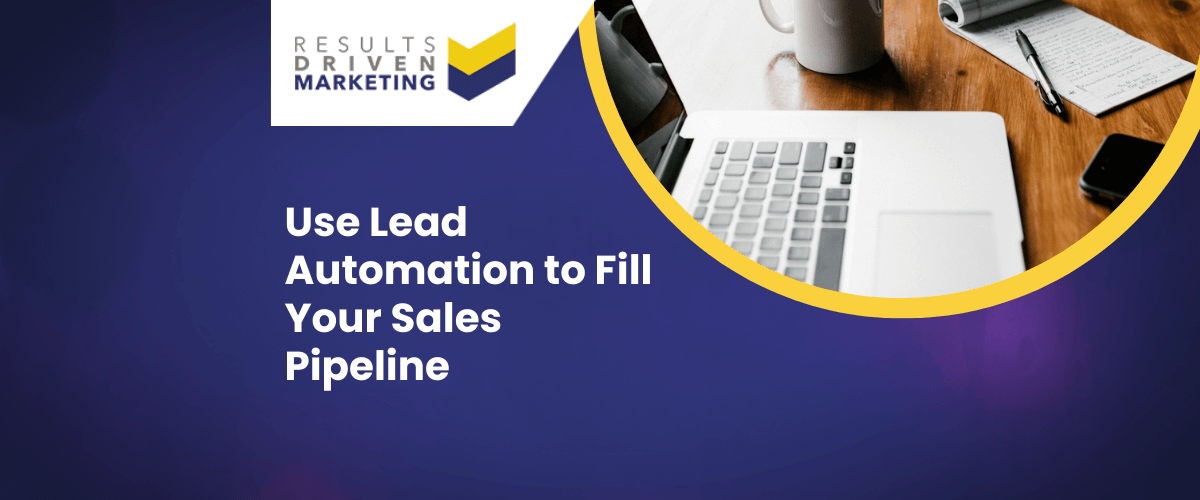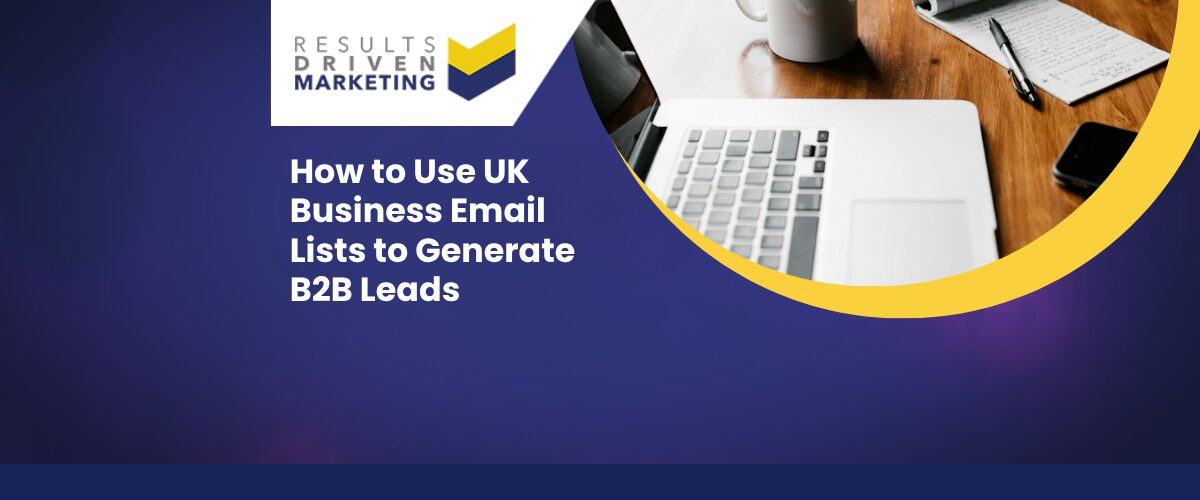
Use Lead Automation to Fill Your Sales Pipeline
In the bustling arena of modern business, lead automation stands as a beacon of efficiency, a transformative approach that is reshaping the landscape of customer acquisition.
At its core, lead automation is the strategic application of technology to streamline and enhance the processes of identifying, engaging, and converting potential customers. It is an essential cog in the machinery of digital marketing, where relevance and responsiveness are not just valued but vital.
The essence of lead automation lies in its ability to nurture prospects with minimal human intervention, ensuring that no opportunity is left unexplored. In an age where time is a currency as valuable as cash itself, automating the lead process is not just a convenience; it’s a necessity. It’s about being present where your customers are, engaging them with precision-targeted content, and guiding them down the sales funnel with an almost prescient understanding of their needs and behaviours.
Table of contents:
What Is Lead Automation?
Lead automation refers to the use of software and technologies designed to manage and nurture potential customers through the sales funnel in an automated way. It encompasses a range of marketing and sales activities that traditionally required manual execution, such as lead capture, segmentation, scoring, and nurturing.
Why is Lead Automation Important?
The significance of lead automation cannot be overstated. In a digital ecosystem brimming with competition, the ability to capture and convert leads efficiently is what sets successful businesses apart. Lead automation serves as a strategic ally, empowering companies to handle the influx of data, manage customer interactions, and personalise the user experience at scale.
Imagine the power of sending a perfectly timed email to a prospect who just visited your pricing page or the impact of a personalised recommendation based on previous browsing behaviour. This is the magic of lead automation – it allows businesses to make meaningful connections with potential customers at critical touch points, fostering relationships that are built to last.
Advantages of Using Lead Automation
The benefits of embracing lead automation are manifold. Let’s delve into a few key advantages:
Efficiency at Scale: Lead automation introduces a level of efficiency that manual processes can hardly match. It’s about doing more with less – less time, less manpower, and less room for error. By automating routine tasks, businesses can allocate their resources to more strategic initiatives.
Cost Savings: With automation comes cost-effectiveness. By reducing the need for manual intervention, companies can lower their overhead costs and improve their bottom line. It’s a smarter way to manage marketing budgets, ensuring that every penny is spent with purpose.
Enhanced Lead Quality: Through sophisticated lead scoring and segmentation, lead automation ensures that only the most qualified prospects are pursued. This precision targeting leads to higher conversion rates and a better return on investment.
Consistent Engagement: Automation ensures that your brand remains consistently engaged with your audience. Whether it’s through timely follow-ups or regular content delivery, lead automation keeps the conversation going, nurturing leads until they’re ready to convert.
Disadvantages of Using Lead Automation
Here are some disadvantages that businesses may encounter:
Over-Reliance on Technology: There’s a risk of becoming too dependent on automation tools. This can lead to a lack of personal touch, which is often necessary to build strong relationships with potential clients.
Initial Setup Complexity: Implementing a lead automation system can be complex and time-consuming. It requires a clear strategy, proper setup, and integration with existing systems.
Loss of Personalisation: If not managed carefully, automated communications can become too generic and fail to resonate with the unique needs and interests of each lead.
Data Quality Issues: Automation is only as good as the data it uses. Poor data quality can lead to misdirected marketing efforts and missed opportunities.
Cost: The cost of sophisticated lead automation software can be prohibitive for small businesses or startups with limited budgets.
Training and Expertise: Staff need to be trained to use automation tools effectively, which can be a resource-intensive process.
Maintenance and Updates: Automation systems require ongoing maintenance and updates to ensure they remain effective and secure.
Potential for Errors: Automated systems can sometimes make mistakes, such as sending out incorrect information or targeting the wrong leads.
Is Using Lead Automation a Good Idea?
So, is lead automation the golden ticket to business growth? Well, it’s not a simple ‘yes’ or ‘no’. It’s more of a ‘when’ and ‘how’. For businesses drowning in leads (a nice problem to have, mind you), automation can be a lifesaver, keeping you afloat by managing and nurturing these potential customers without breaking a sweat.
When done right, lead automation can be a powerhouse, driving sales and fostering growth. It’s about leveraging technology to enhance your marketing efforts, not replace them. Think of it as a member of your team who works 24/7, doesn’t take breaks, and never asks for a raise.
Key Considerations When Using Leading Automation
Before diving headfirst into the lead automation pool, there are a few key considerations to keep top of mind:
Business Size Matters: If you’re a small fish in a big pond, your lead automation needs will differ vastly from the sharks of the industry. Tailor your automation level to the size of your business and the volume of leads you handle.
Complexity of the Customer Journey: The more complex the journey, the more nuanced your automation needs to be. It’s like plotting a course through the stars; the right tools will help you navigate the complexities with ease.
Resource Availability: Do you have the resources to support a robust automation system? It’s not just about having the tools; it’s about having the right crew to man them.
Data Management: Lead automation is hungry for data, but not just any data. It craves quality, well-organized data. Ensure your databases are up to snuff, or you’ll find your automation efforts sputtering.
Training and Expertise: Do you have the expertise to manage and maintain your automation system? It’s an investment in both technology and people.
Alternatives to Using Lead Automation
While lead automation is the talk of the town, it’s not the only player in the game. There’s a whole spectrum of strategies for managing and nurturing leads that don’t rely entirely on automation. Let’s chew over a few, shall we?
Personal Touch with Manual Outreach: Sometimes, nothing beats the good old-fashioned personal touch. Picking up the phone, sending a personalized email, or even a handwritten note can make your leads feel like a million bucks.
CRM Systems: Customer Relationship Management (CRM) systems can be used with a lighter touch of automation. They keep track of interactions and help manage follow-ups without going full auto-pilot.
Event Networking: Face-to-face or virtual events provide a golden opportunity to connect with leads in a more organic, personal way.
Referral Programs: Encouraging word-of-mouth through referral programs can be a more human approach to lead generation and nurturing.
Lead Automation Process
Now, if you’re set on harnessing the power of lead automation, let’s walk through the steps, one by one:
- Lead Generation: Cast your net with content marketing, social media, and SEO to attract a sea of prospects.
- Lead Capture: Use forms, landing pages, and lead magnets to gather contact info like a pro.
- Lead Segmentation: Sort your leads into buckets based on behavior, demographics, or how they found you.
- Lead Scoring: Assign points to leads based on their actions to see who’s hot and who’s not.
- Lead Nurturing: Roll out the red carpet with automated emails, tailored content, and drip campaigns.
- Lead Qualification: Use the data to figure out who’s ready to talk turkey and who needs more time.
- Lead Conversion: When a lead is ripe for the picking, automated prompts can nudge your sales team to swoop in.
Marketing Automation Workflows
Setting up marketing automation workflows is like choreographing a dance where every step is in sync with the rhythm of your lead’s journey. Here’s how you can orchestrate this masterpiece:
Trigger Events: Define specific actions that will trigger your automated workflow. Think of actions like downloading a white paper or signing up for a webinar.
Email Sequences: Design a series of emails that respond to your lead’s actions, providing them with information that’s relevant to their stage in the buying process.
Task Assignments: Automate task assignments for your sales team so they can follow up with leads at just the right moment.
Performance Monitoring: Keep an eye on how your workflows are performing, and don’t be shy to tweak them for better results.
Lead Management Automation
Diving into lead management automation is like setting sail on a voyage toward efficiency. It’s about using savvy tools to handle the heavy lifting of lead management. These tools are the compass and map that guide you through the vast ocean of potential customers, helping you to identify, sort, and engage with the most promising prospects.
Here’s how it unfolds:
Automated Lead Capture: Tools like web forms and chatbots collect lead information without breaking a sweat.
Smart Segmentation: Software sorts leads into groups based on set criteria, making it a breeze to target them with relevant content.
Effortless Email Campaigns: Email marketing platforms send out pre-designed campaigns to nurture leads along the buyer’s journey.
Sales and Marketing Alignment: CRM systems ensure that sales and marketing teams are in harmony, sharing lead information seamlessly.
FAQ:
Q: How does lead automation save money, time, and effort?
A: Lead automation is like having a tireless team working around the clock. It reduces manual tasks, speeds up response times, and cuts down on the need for a large team, saving you a pretty penny, precious hours, and a whole lot of elbow grease.
Q: How does lead automation increase the number of qualified leads?
A: By using data-driven insights and lead scoring, lead automation ensures you’re focusing on leads that are more likely to convert, boosting the quality of your prospects.
Q: How does lead automation impact conversions?
A: It’s all about timing and relevance. It delivers the right message at the right time, nurturing leads until they’re ripe for conversion.
Q: What are the best practices for setting up marketing automation workflows?
A: Start with clear goals, understand your audience, keep content relevant, test and tweak regularly, and always, always keep an eye on the data.
Q: How can lead management be effectively automated?
A: By integrating tools that capture, score, nurture, and analyse leads, and by ensuring these tools talk to each other smoothly.
Q: What tools are available for lead automation?
A: There’s a whole toolkit out there, from CRM systems and email marketing platforms to analytics tools and AI-driven software.
Q: What metrics should be tracked to measure the success of lead automation?
A: Look at conversion rates, engagement metrics, campaign ROI, and sales cycle length to gauge the impact of your lead automation efforts.
Who are we?
Dedicated to lead generation, Results Driven Marketing provides myriad services SMEs can trust to deliver results.
Our marketing lists are guaranteed accurate to industry high standards, and GDPR compliant and our experience team means that if you are looking to buy data, they make them totally bespoke and highly relevant whether you are looking for email lists, direct mailing lists or telemarketing lists.
Our email marketing software is highly rated. Responder provides the automation tools you need to put your marketing on autopilot.
We also supply email marketing solutions with our email marketing platform.
Call us today on 0191 406 6399 to discuss your specific needs.
Results Driven Marketing
info@rdmarketing.co.uk
0191 406 6399





